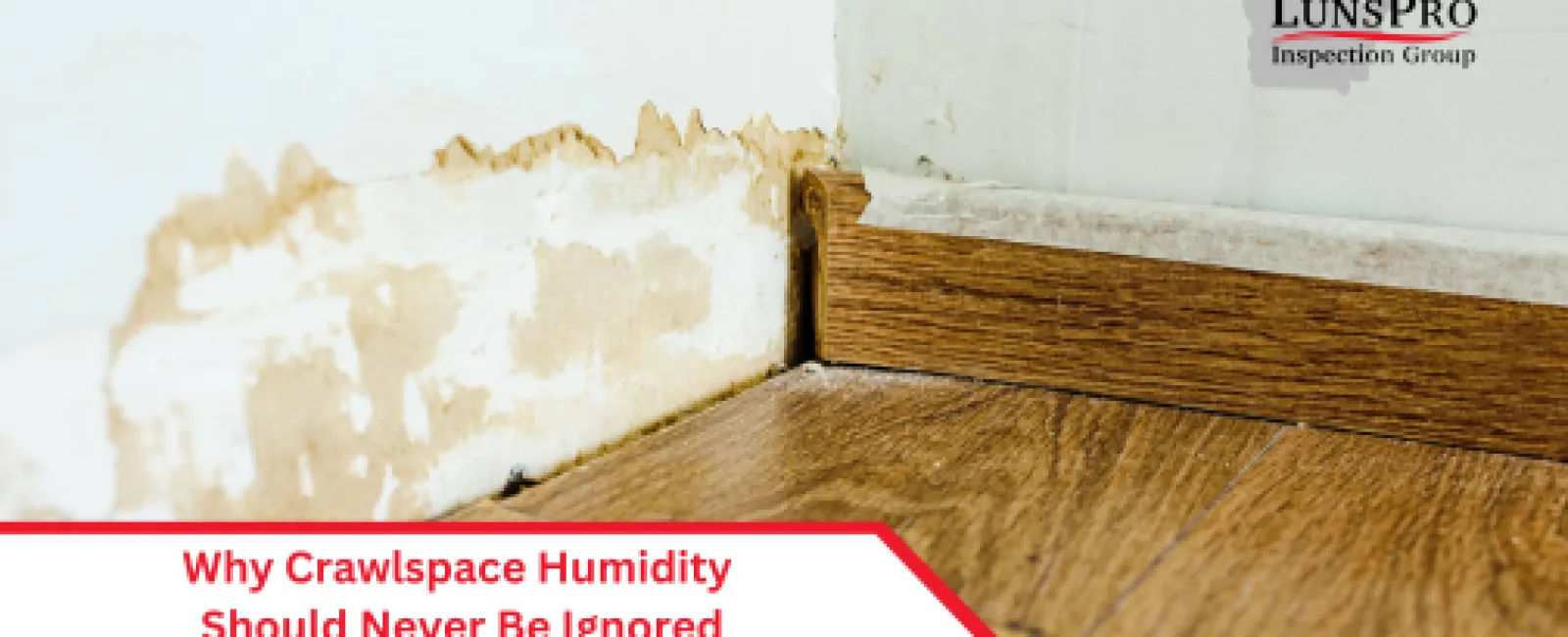When people think about the most critical parts of their home, they often focus on what's visible—roofs, walls, kitchens, and bathrooms. But there's one hidden area that can silently cause serious issues: the crawlspace.
During a recent inspection, LunsPro's certified inspector Rino G. discovered a concerning condition beneath a property: water droplets and condensation forming in the crawlspace due to excessive humidity and an uninsulated pressure reducer valve. While this might seem minor, it's the kind of issue that can spiral into major repairs if left unchecked.
What Causes Crawlspace Condensation?
Crawlspaces are naturally more prone to moisture issues, especially in humid regions like the Atlanta. When warm, humid air enters a cool crawlspace—or when plumbing components like pressure reducing valves are not properly insulated—it can lead to condensation. Over time, this excess moisture builds up and can create an ideal environment for:
-
Mold and mildew growth
-
Wood rot and structural damage
-
Rusting of metal fixtures
-
Poor indoor air quality
The Pressure Reducer Valve Problem
Pressure reducing valves (PRVs) help regulate the water pressure in your plumbing system. When these valves are located in a crawlspace and left uninsulated, the temperature difference between the valve and the surrounding air can cause moisture to form on its surface. This may look like harmless droplets—but in reality, it signals the presence of uncontrolled humidity.
Without proper intervention, such conditions can lead to:
-
Damp insulation or flooring above the crawlspace
-
Increased strain on HVAC systems
-
Higher energy bills
-
Accelerated wear and tear on your home's infrastructure
How to Prevent Crawlspace Moisture Problems
Fortunately, the solutions are straightforward when caught early by a trained inspector:
1. Insulate the PRV and Exposed Pipes
Insulating valves and plumbing can help stabilize temperatures and reduce condensation.
2. Improve Crawlspace Ventilation
Adding vents or a dehumidification system can regulate moisture levels and keep the air moving.
3. Install a Vapor Barrier
A high-quality vapor barrier on the ground can help block rising dampness from the soil.
4. Seal Air Leaks
Ensure that gaps in the crawlspace walls or access doors are sealed to prevent outside air from infiltrating.
The Role of a Home Inspection
Problems like condensation from uninsulated components often go unnoticed until they cause visible damage—or lead to failed home sales. This is where a comprehensive home inspection becomes invaluable.
At LunsPro Inspection Group, we inspect areas that most homeowners never even think to check. Our certified professionals, like Rino G., are trained to identify moisture intrusion, ventilation deficiencies, plumbing issues, and more—all before they result in expensive repairs.

